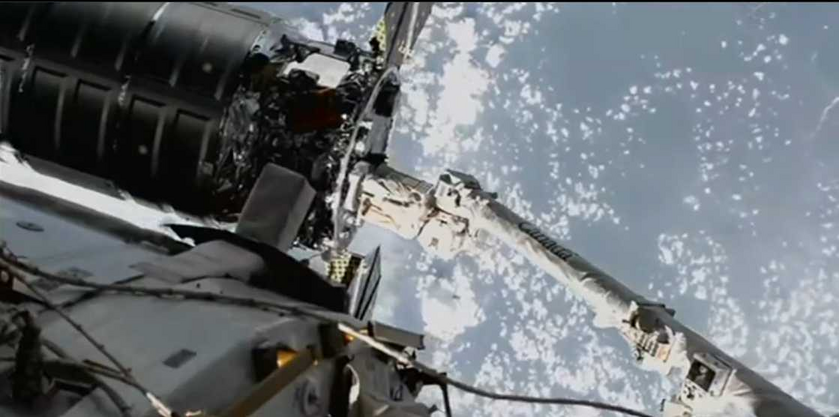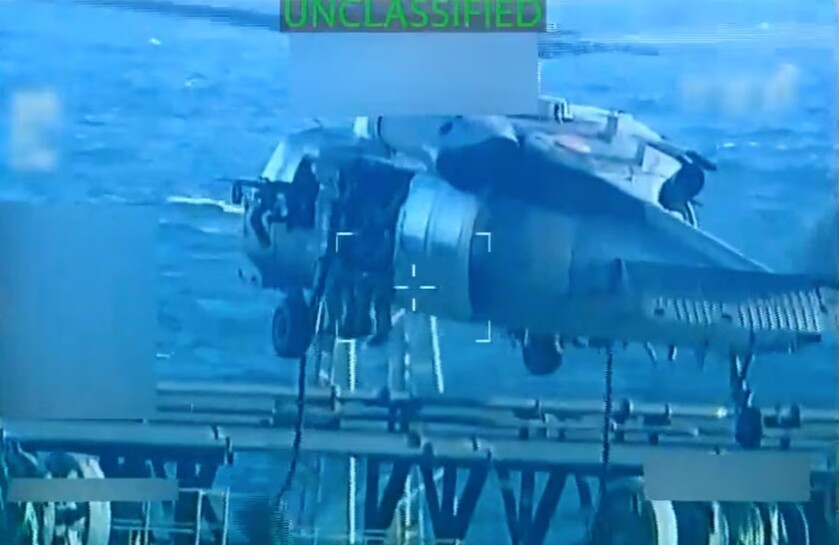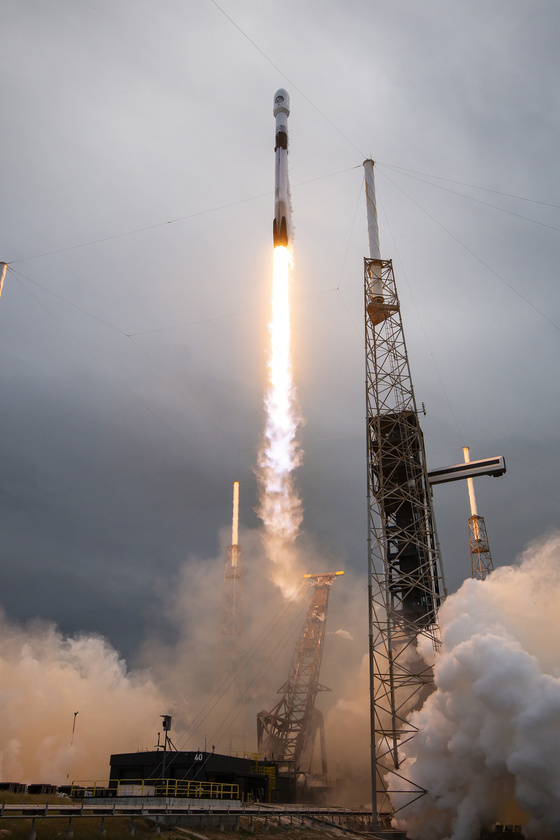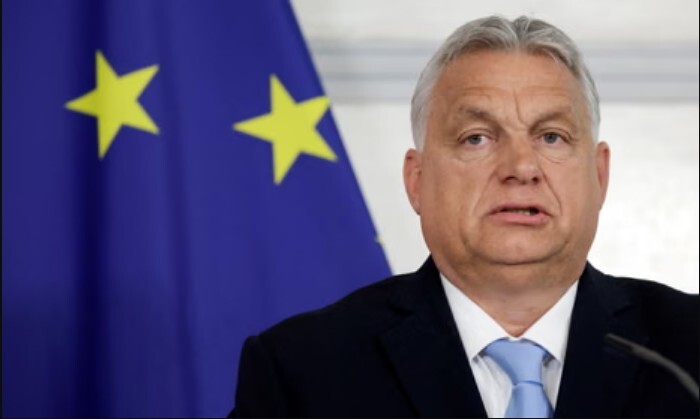Northrop Grumman's largest cargo spacecraft, the Cygnus XL, successfully arrived at the International Space Station (ISS) on Thursday, Sept. 18 at 1124 UTC, after a one-day delay due to a thruster issue that required trajectory replanning.
NASA astronaut Jonny Kim and Zena Cardman used the orbiting lab's Canadarm2 robotic arm to grapple the Cygnus XL as the ISS flew about 420 kilometers above the Democratic Republic of Congo. The spacecraft was berthed to the Unity module's Earth-facing port at 1410 UTC.
The spacecraft, named S.S. William "Willie" McCool in honor of a NASA astronaut who died in the 2003 Columbia disaster, delivered approximately 4,990 kg of supplies, science experiments, and equipment to sustain the ISS crew and support critical research.
The NG-23 mission marks the debut flight of the Cygnus XL, a significantly upgraded version of Northrop Grumman's cargo ship with 33% more cargo capacity than previous models. This increased capacity, achieved through a 1.6-meter longer pressurized cargo module, allows the spacecraft to carry the equivalent volume of two-and-a-half minivans. It is the first Cygnus delivery to the ISS in over a year, following delays caused by issues with the NG-22 mission, which was ultimately canceled after its spacecraft was damaged during transport.
The Cygnus XL launched on Sunday, September 14, 2025, atop a SpaceX Falcon 9 rocket from Cape Canaveral Space Force Station, Florida.
NG-23 was the third and final Falcon 9 launch contracted by Northrop Grumman for its Cygnus missions, as the company transitions to a new, domestically built Antares 330 rocket, expected to debut in late 2026. The Falcon 9's higher payload capacity was crucial for maximizing the Cygnus XL's cargo potential.
The delivered cargo includes food, spare parts for life support systems like the urine processor, nitrogen, and oxygen Key research payloads involve materials to produce semiconductor crystals in space, equipment to improve cryogenic fuel tanks, a specialized UV light system to prevent microbial growth in water systems, and pharmaceutical crystals for potential cancer treatments.
"Highlights of space station research and technology demonstrations, facilitated by delivery aboard this Cygnus XL, include materials to produce semiconductor crystals in space and equipment to develop improvements for cryogenic fuel tanks," agency officials wrote in a mission description. "The spacecraft also will deliver a specialized UV light system to prevent the growth of microbe communities that form in water systems and supplies to produce pharmaceutical crystals that could treat cancer and other diseases."
The Cygnus XL was supposed to reach the ISS on Wednesday morning (Sept. 17), but that plan was scuttled by a thruster issue. The Cygnus team overcame that problem, however, and got the freighter on track for a one-day-late rendezvous.
"It's a very intricate planning exercise that we have to go through to arrive at Space Station and rendezvous in a very specific point in space," Bill Spetch, NASA ISS operations integration manager, during the Thursday morning docking broadcast. "When we had a couple of issues with a couple of burns getting cut short, that caused that trajectory to be off, and so it takes some time to go replan that and make sure that we could arrive at station safely."
The NG-23 Cygnus XL honors a fallen NASA astronaut. The freighter is named the S.S. William "Willie" McCool, after one of the seven crew members who died in the 2003 space shuttle Columbia accident.
"His life continues to inspire us." Kim said after spacecraft capture. "To see a ship bearing his name safely arrive at the station is a reminder that his courage and kindness are still circling our beautiful planet Earth."
Cygnus XL will remain docked until March 2026, during which time it will be filled with waste before departing and deorbiting to burn up in Earth's atmosphere. This mission is part of Northrop Grumman's ongoing NASA Commercial Resupply Services contract, with three more missions already on the books.
=================
SpaceX Falcon 9 launched Northrop Grumman's new Cygnus XL cargo spacecraft on its debut mission NG-23, to the International Space Station (ISS) on Sunday, Sept. 14, at 2211 UTC from Cape Canaveral Space Force Station's Space Launch Complex 40.
The Falcon 9 rocket's first-stage booster B1094 which is on its fourth flight, successfully returned to Landing Zone 2 at Cape Canaveral about eight minutes after liftoff as planned. Meanwhile Cygnus XL separated from the Falcon 9 second stage in orbit about 15 minutes after liftoff, on its way to the space station.
"@NorthropGrumman's Cygnus XL cargo craft deployed its cymbal-shaped UltraFlex solar arrays about an hour-and-a-half after launch today powering the spacecraft during its flight to the station," NASA ISS page wrote on X.
The NG-23 mission marks the first flight of the Cygnus XL, a significantly larger and more capable freighter capable of carrying 4,990 kilograms(kg) of cargo, a 33% increase over previous models. The previous iteration hauled about 3,855 kg pounds of cargo to the ISS.
The spacecraft, named S.S. William "Willie" McCool in honor of the Columbia STS-107 pilot, will be captured by the station's Canadarm2 robotic arm and berthed to the Unity module on Wednesday, September 17, 2025 at about 1035 UTC.
NG-23 is Northrop Grumman's 23rd resupply mission to the ISS under NASA's Commercial Resupply Services-2 contract. The Cygnus XL's increased capacity allows for more science and cargo delivery, including materials for semiconductor and pharmaceutical crystal production, equipment for cryogenic fuel tank improvements, and a specialized UV light system to combat microbial growth in the station's water systems.
Among the supplies packed aboard the freighter are "materials to produce semiconductor crystals in space and equipment to develop improvements for cryogenic fuel tanks," NASA officials wrote in a statement. "The spacecraft also will deliver a specialized UV light system to prevent the growth of microbe communities that form in water systems and supplies to produce pharmaceutical crystals that could treat cancer and other diseases."
The spacecraft will remain docked to the ISS until at least March 2026, after which it will be filled with waste and deorbited to burn up in Earth's atmosphere. Unlike SpaceX's reusable Dragon capsule, Cygnus is a disposable spacecraft.
The Cygnus XL's larger size necessitates temporary unberthing from the ISS during the approach of a crewed Russian Soyuz spacecraft in November 2025 for safety reasons.
NG-23 is the first Cygnus launch since August 2024, when NG-21 took flight. NG-22 was supposed to follow in January of this year but was delayed to June due to avionics issues. Then, in late March, NASA announced that NG-22 had been called off, as a result of damage the Cygnus incurred during transport to the launch site.















